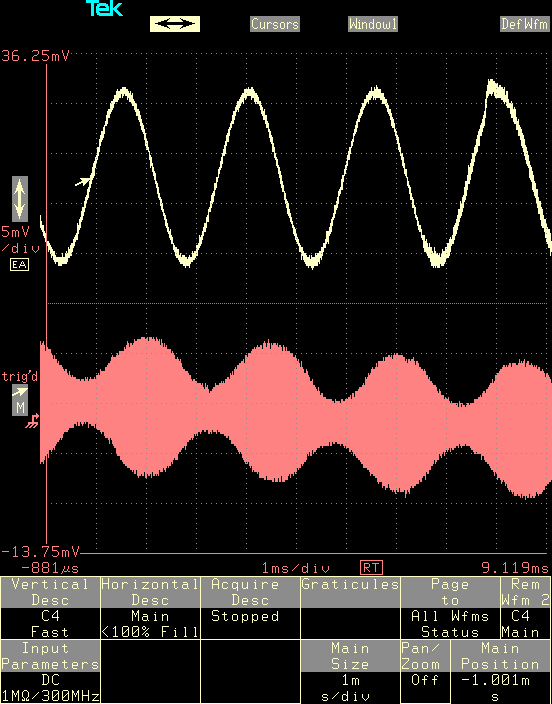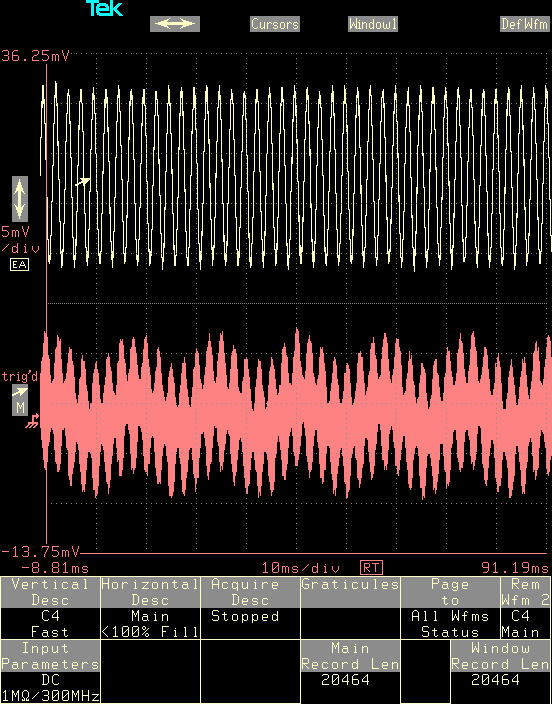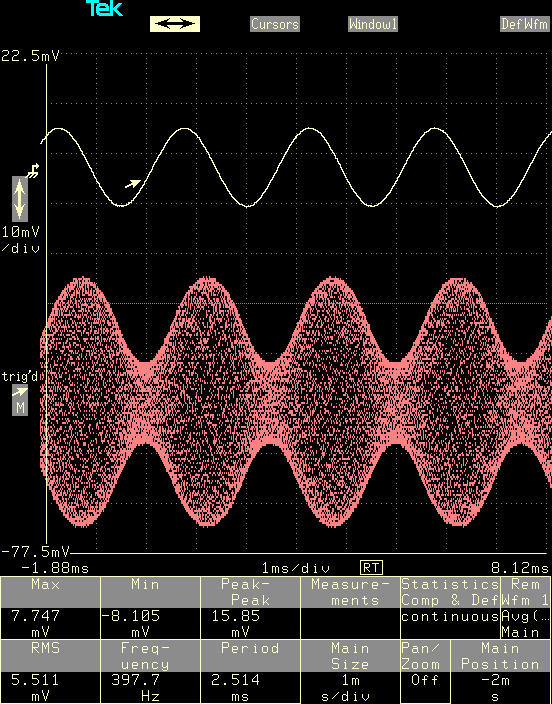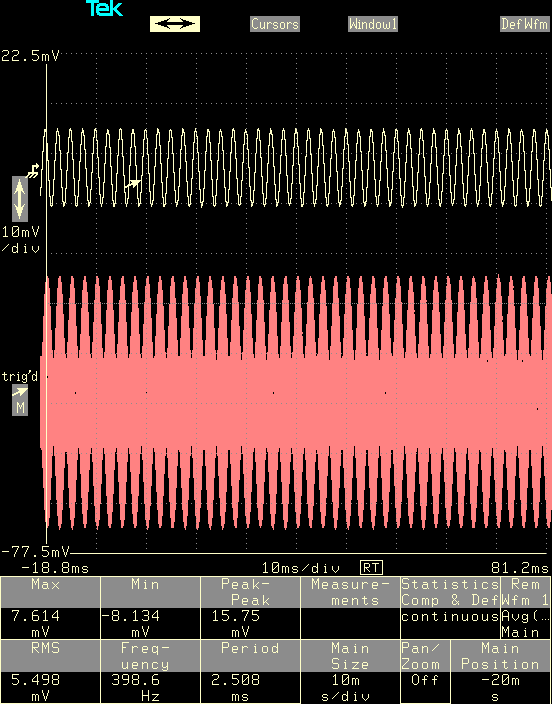Overview
The HP TS-510A/U is the military version of the HP 608D signal generator. Other than some physical differences such as waterproof switches, different power connector and built-in locations for spare fuses, it appears identical to the HP 608D.
I acquired this unit locally, together with a Tektronix 545 for $20. Despite sitting in a drafty shed for years it powered up, output reasonable signals and responded correctly to all controls. It’s always nice to have a second signal generator so I decided to restore this unit and put it to use.
Diagnosis
The first problem was a 60 Hz modulation of the output that was ripple from inadequate power supply filtering. Testing showed every electrolytic capacitor to have excessivly high leakage.
In each of the photos below, the bottom trace is the modulated RF output and the top trace is the modulating signal of 400 Hz. The 60 Hz ripple can be seen as a gradual drop in the first image and is clearly visible as a 60 Hz sine wave modulating the output in the second image.
Repair
Unlike silicon rectifiers which have a forward voltage drop of approximately 1.7 V, selenium rectifiers have a much larger forward voltage drop. For the rectifiers in this instrument it measured 20-30 V. If a direct replacement of silicon for selenium is made, that excess voltage must be dropped by the regulator tube in the power supply, likely exceeding its plate dissipation rating and shortening its lifespan.
To solve this problem we will include series resistors on the output of each bridge rectifier. The voltage drop across the resistors will vary with load, so we choose a resistance such that, at maximum power draw, each regulator tube has a 2% voltage overhead before losing regulation. Under lesser loads the regulator tube must drop more voltage but will have correspondingly less current to deal with.
It is important to note that a few of the replacement capacitors will have bodies which are at a different potential than ground. The original capacitors solved this problem by using paper bodies. I don’t know the voltage rating of the plastic wrap on the capacitors so I gave them an additional wrap of 600v heatshrink.
Results
After the repair all power supplies are within spec and have sub-1 mV ripple. Sample output signals are shown below; all traces of 60 Hz ripple are gone.



